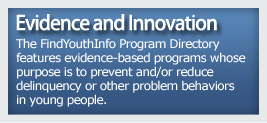Youth At Risk of Teen Dating Violence
Certain factors may increase teens’ risk of experiencing and perpetrating teen dating violence. A number of studies have looked at the relationship between teen dating violence and community, family, peer, and individual risk factors. A lack of longitudinal data and a reliance on self-report data limits the causal connections that can be made between risk factors and teen dating violence. In most cases the relationship between risk factors and teen dating violence listed below represent correlations, but not necessarily causality.1
Risk Factors for Teen Dating Violence Victimization
Findings suggest that the frequency and severity of teen dating violence increases with age.2 In addition, the likelihood of being subjected to violence in a relationship increases for teens who
- experience stressful life events or show symptoms of trauma (including past history of sexual abuse or prior sexual victimization);
- live in poverty, come from disadvantaged homes, or receive child protective services;
- are exposed to community or neighborhood violence;
- participate in risky behaviors (e.g., substance abuse, alcohol use, violence);
- begin dating at an early age;
- participate in sexual activity prior to age 16;
- have problem behaviors in other areas;
- have a friend involved in dating violence;
- participate in peer violence or have violent friends;
- believe that dating violence is acceptable or are more accepting of rape myths and violence against women;
- begin menstruating at an early age (for women);
- have been exposed to harsh parenting; inconsistent discipline; or lack supervision, monitoring, and warmth;
- have low self-esteem, anger, or depressed mood;
- use emotional disengagement and confrontational blaming as coping mechanisms;
- exhibit maladaptive or antisocial behaviors;
- have aggressive conflict-management styles; and/or
- have low help-seeking proclivities.3
Risk Factors for Teen Dating Violence Perpetration
There are also risk factors that contribute to the likelihood of a teen becoming a perpetrator of dating violence. Many of these are developmentally normal in youth, such as little to no relationship experience, vulnerability to peer pressure, and unsophisticated communication skills.4 Some additional factors that have been found to be associated with teen dating violence perpetration include
- believing that it is acceptable to use threats or violence to get one’s way or to express frustration or anger;
- problems managing anger or frustration;
- association with violent peers;
- low self-esteem and depression;
- not having parental supervision and support; and/or
- witnessing violence at home or in the community.5
1 Offenhauer & Buchalter, 2011
2 Halpern, Spriggs, Martin, & Kupper, 2009; Offenhauer & Buchalter, 2011
3 Centers for Disease Control and Prevention (CDC), 2005; Halpern et al., 2009; Offenhauer & Buchalter, 2011; Lewis & Fremouw, 2001; Rickert & Wiemann, 2008
4 Mulford & Giordano, 2008
5 CDC, 2005
Youth Topics
Feature Articles
Tools & Guides
Technical Assistance
Websites
Videos & Podcasts
Hotlines
Agencies
Departments

- Characteristics of Healthy & Unhealthy Relationships
- Prevalence of Teen Dating Violence
- Electronic Aggression and Teen Dating Violence
- Teen Dating Violence and Gender
- Youth At Risk of Teen Dating Violence
- Preventing Teen Dating Violence
- Consequences of Teen Dating Violence
- Legal Responses to Teen Dating Violence
- Resources for Victims of Teen Dating Violence
- Public Awareness About Teen Dating Violence
- Additional Federal Resources
- References

Resources
Announcements
Youth Topics
Feature Articles

Map My Community is a tool designed specifically to assist you in locating resources in your community to help you build and strengthen your youth program. Get ideas for new partnerships, identify gaps in your community, and learn about resources to avoid duplication of effort.



















